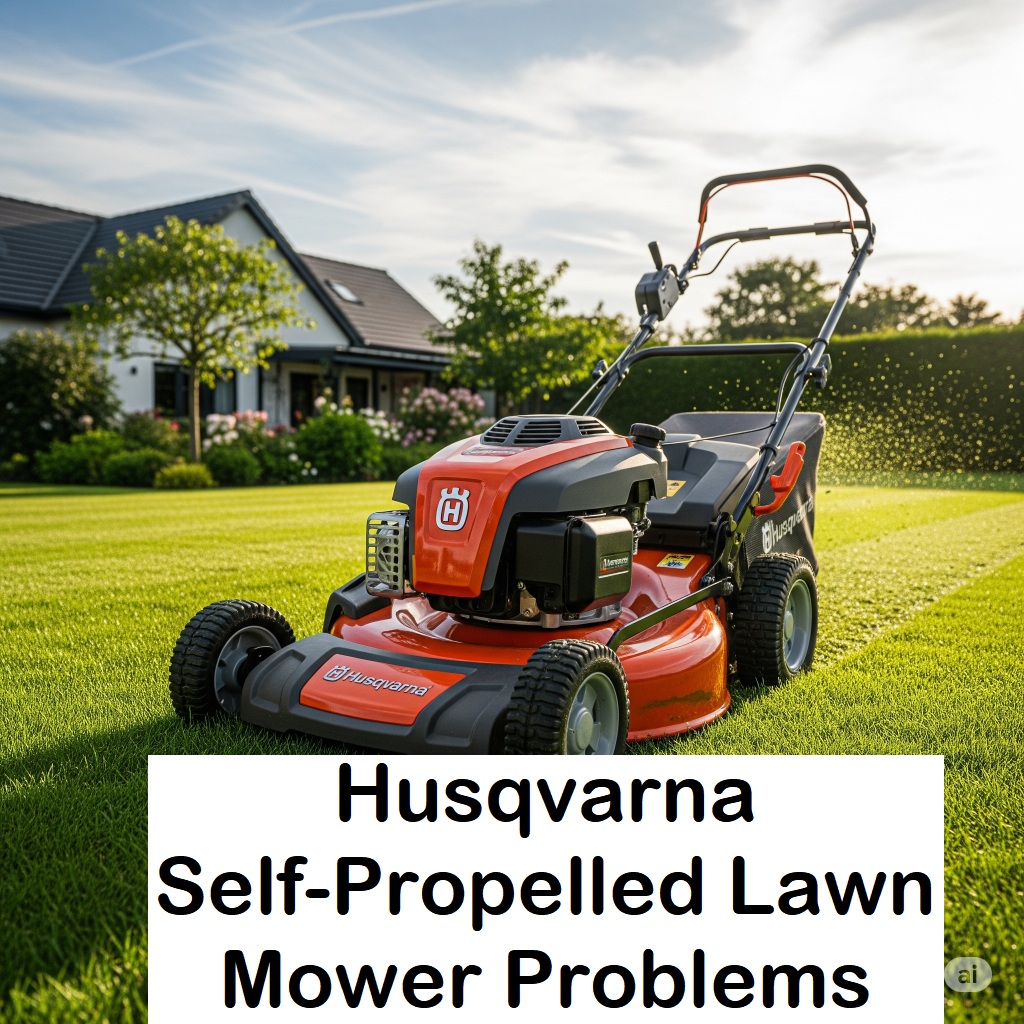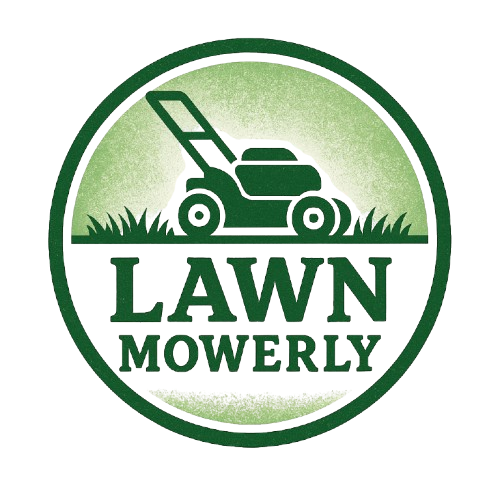
Husqvarna self-propelled lawn mowers are popular for their performance, reliability, and ability to make mowing less of a chore. However, like any piece of machinery, they’re not immune to issues over time. From starting troubles and drive failures to uneven cutting and power loss, these problems can hinder productivity and reduce the mower’s lifespan if left unaddressed.
In this guide, we’ll explore the most common problems encountered by Husqvarna self-propelled lawn mower owners—along with practical, step-by-step solutions and maintenance tips to keep your mower running like new.
1. Mower Won’t Start
Common Causes:
- Empty or contaminated fuel tank
- Old fuel (especially ethanol-based blends)
- Clogged air filter
- Faulty or dirty spark plug
- Dead or weak battery (in electric start models)
- Dirty carburetor
Solutions:
- Refill with fresh, ethanol-free fuel or add fuel stabilizer if storing fuel for long periods.
- Clean or replace the air filter to restore airflow.
- Inspect the spark plug for corrosion, oil fouling, or damage—replace if needed.
- Check battery connections and charge or replace the battery.
- If the mower still won’t start, clean the carburetor with a carb cleaner or have it serviced.
Tip: Regularly draining fuel at season’s end helps prevent gumming in the carburetor.
2. Poor or Uneven Cut
Common Causes:
- Dull or damaged blades
- Uneven mower deck
- Grass buildup under the deck
- Wrong cutting height setting
- Bent crankshaft from hitting a hard object
Solutions:
- Sharpen or replace blades every 25 hours of use or at the start of each season.
- Level the mower deck using the adjustment points near each wheel.
- Clean out dried grass and debris from the underside of the deck.
- Adjust cutting height based on grass length and terrain.
- If the crankshaft is bent, the engine may vibrate excessively—this requires professional repair.
Tip: Always mow dry grass for the cleanest cut and to reduce buildup under the deck.
3. Drive System Problems
Common Causes:
- Worn or broken drive belt
- Loose drive cable or handle linkage
- Jammed or dirty drive wheels
- Faulty transmission
Solutions:
- Inspect the drive belt and replace it if frayed, loose, or broken.
- Adjust or tighten the drive cable—refer to the user manual for correct tension settings.
- Remove wheels and clean out dirt or grass preventing them from spinning freely.
- If transmission failure is suspected, professional servicing may be necessary.
Warning: Never mow with a loose or squealing drive belt—it can snap and cause further damage.
4. Excessive Vibration
Common Causes:
- Unbalanced or loose blades
- Damaged blade adapter
- Debris trapped around the blade or crankshaft
- Worn wheel bearings or deck mounts
Solutions:
- Tighten blade bolts securely and ensure blades are balanced.
- Replace bent or worn blade adapters that affect rotation.
- Clean all moving parts underneath the deck.
- Check for loose components around the deck and handle—tighten or replace bushings as needed.
5. Mower Smokes or Emits Black Smoke
Common Causes:
- Overfilled or leaking oil
- Dirty air filter
- Burning oil due to engine wear
- Fuel mixture too rich (choke stuck)
Solutions:
- Check and correct oil level—never exceed the “Full” mark on the dipstick.
- Clean or replace the air filter to allow proper airflow.
- Inspect the choke linkage—ensure it opens after startup.
- If engine wear is causing internal oil burn, consult a technician.
Note: Blue smoke indicates oil burning; black smoke points to a fuel/air mix issue.
6. Mower Loses Power or Stalls During Use
Common Causes:
- Clogged fuel filter or lines
- Dirty or partially blocked carburetor
- Faulty ignition coil
- Spark plug fouling
- Grass clogging the deck and choking airflow
Solutions:
- Replace the fuel filter and flush fuel lines if fuel flow is restricted.
- Clean the carburetor and jets to improve fuel atomization.
- Test the ignition coil using a spark tester and replace if weak or dead.
- Clean and gap the spark plug correctly (usually 0.030” for most models).
- Keep the deck clean to reduce engine load.
7. Self-Propel Feature Not Working
Common Causes:
- Loose or broken drive cable
- Damaged transmission
- Worn-out drive wheels
- Jammed pulley or belt
Solutions:
- Adjust or replace the self-propel cable for proper engagement.
- Check the drive belt and pulley system for damage or slippage.
- Replace worn drive wheels that no longer grip.
- If transmission has failed internally, contact a service professional.
8. Mower Pull Cord is Hard to Pull
Common Causes:
- Engine hydro-lock from overfilled oil
- Blade or crankshaft obstruction
- Seized recoil starter assembly
Solutions:
- Check oil level; if oil entered the cylinder, remove the spark plug and pull cord gently to clear.
- Inspect the blade area for debris or damage.
- Lubricate or replace the recoil starter if internal springs are stuck or broken.
9. Wheels Don’t Roll Freely (Especially When Pushing)
Common Causes:
- Drive system engaged during manual movement
- Grass or debris wrapped around the axle
- Rusted or dry wheel bearings
Solutions:
- Disengage the self-propelled lever when pushing manually.
- Clean debris from around wheels and axles.
- Lubricate wheel bearings or replace rusted components.
10. Engine Runs Rough or Surges
Common Causes:
- Dirty carburetor
- Vacuum leak
- Old fuel or poor quality gas
- Air filter restrictions
Solutions:
- Clean or rebuild the carburetor.
- Check for cracked vacuum hoses and replace as needed.
- Replace with fresh, high-octane gasoline or use a fuel stabilizer.
- Replace or clean the air filter element.
Maintenance Tips to Prevent Common Problems
Keeping your Husqvarna mower in good condition reduces the likelihood of these issues. Here are essential maintenance habits:
- Fuel: Use ethanol-free or stabilized fuel, and never leave old fuel in the tank during storage.
- Blades: Sharpen blades regularly for clean cuts and less engine strain.
- Oil: Change engine oil every 25–50 hours of use or annually.
- Air Filter: Clean or replace the air filter every season.
- Spark Plug: Inspect and replace spark plugs annually.
- Cleaning: Always clean the mower deck and wheels after use to prevent buildup.
When to Seek Professional Help
While many issues are fixable with basic tools and parts, some require a qualified technician. Consider professional service when:
- You suspect internal engine damage.
- The transmission or crankshaft is faulty.
- Carburetor cleaning doesn’t resolve engine surging or stalling.
- You are unable to start the mower after multiple attempts and checks.
Conclusion
Husqvarna self-propelled lawn mowers are built for durability and performance, but even the best machines need regular care. By understanding common problems—such as starting failures, drive system malfunctions, and uneven cuts—you can troubleshoot issues quickly and keep your mower running for years.
Stick to a regular maintenance routine, use quality fuel and oil, and inspect key components like belts, blades, and filters throughout the mowing season. If a problem persists despite your best efforts, consult a certified Husqvarna repair center to avoid more expensive repairs down the line.
Would you like this article formatted for a blog post with headings and bullet points for easier readability? Or do you want images, part references, or links to specific Husqvarna manuals included?

I’m David man behind Lawn Mowerly; I’ve been dealing with lawnmowers and Tractors with my father since I was a kid. I know every make and model and what each one is capable of and love helping people find the perfect equipment for their needs.
